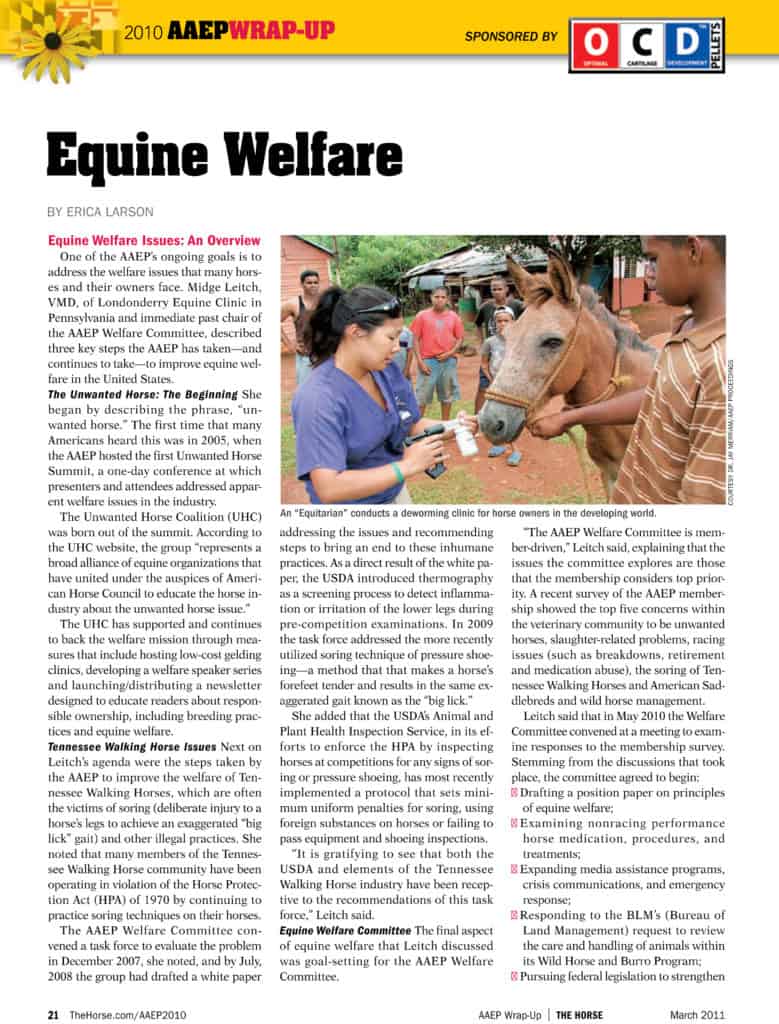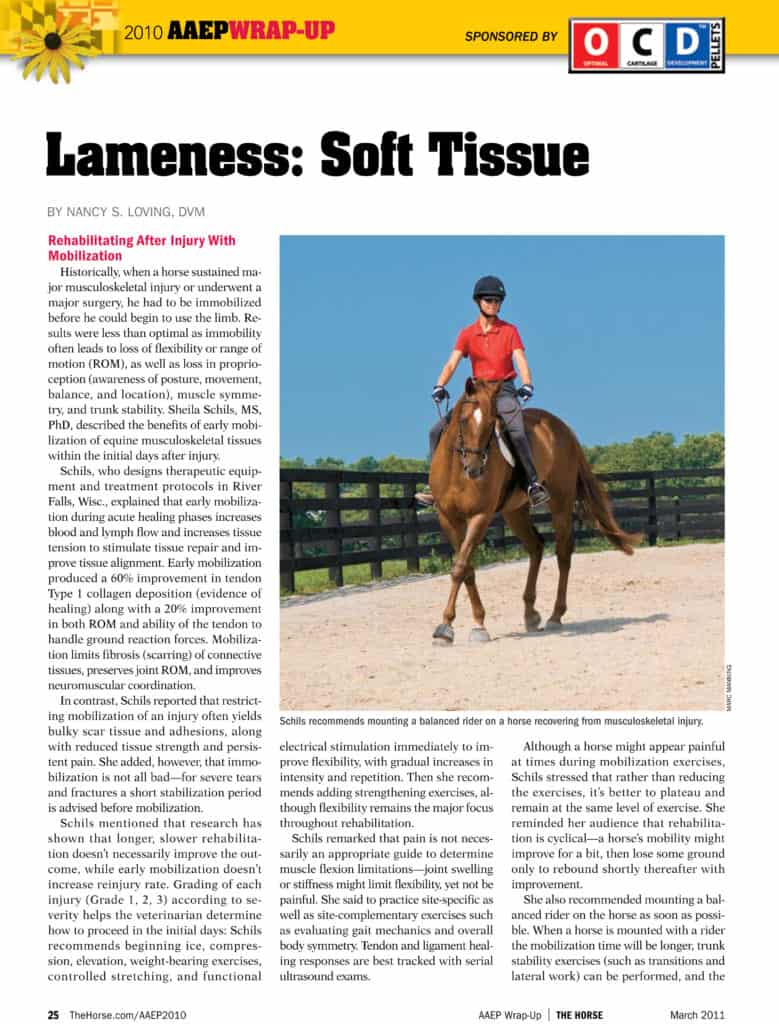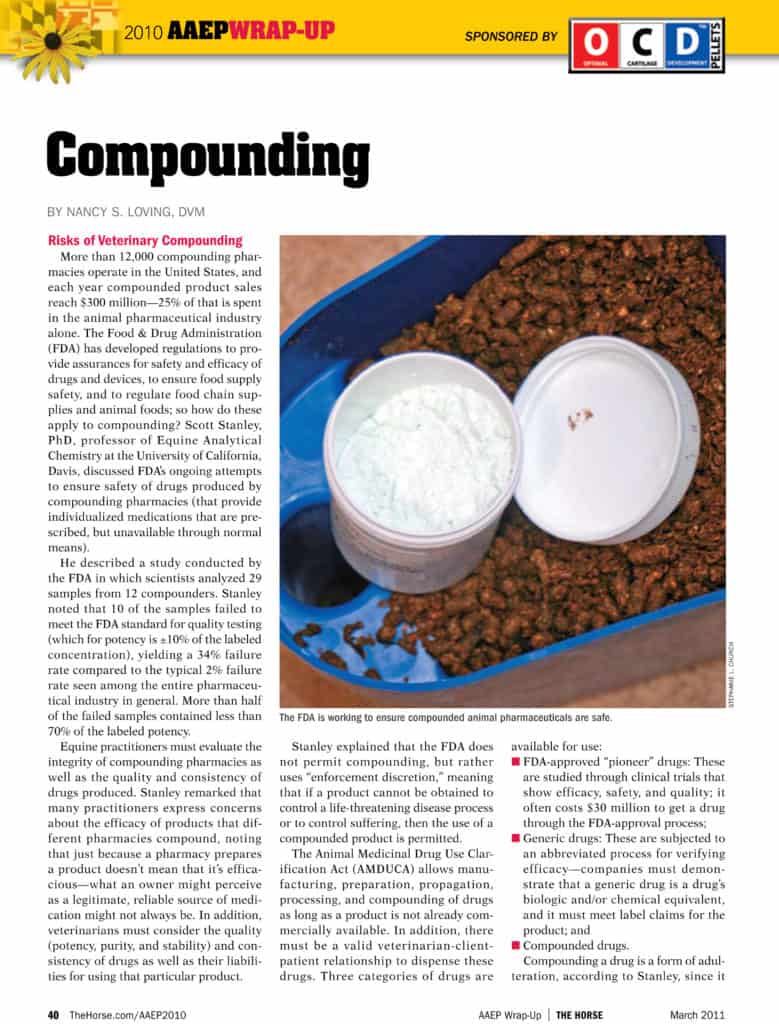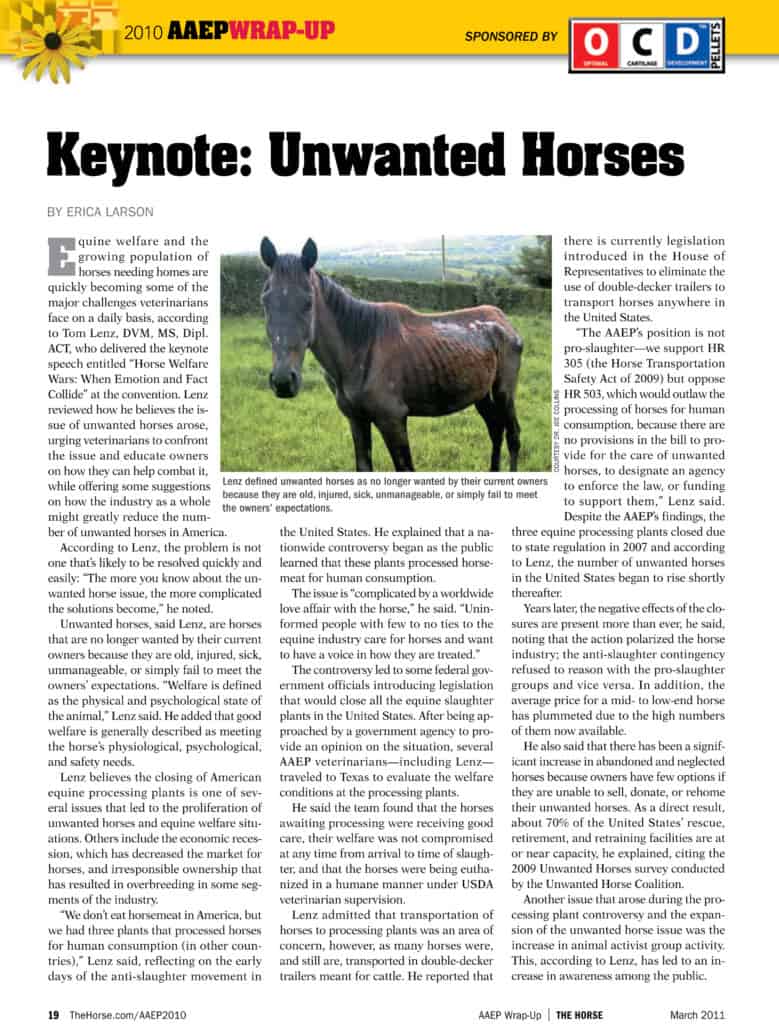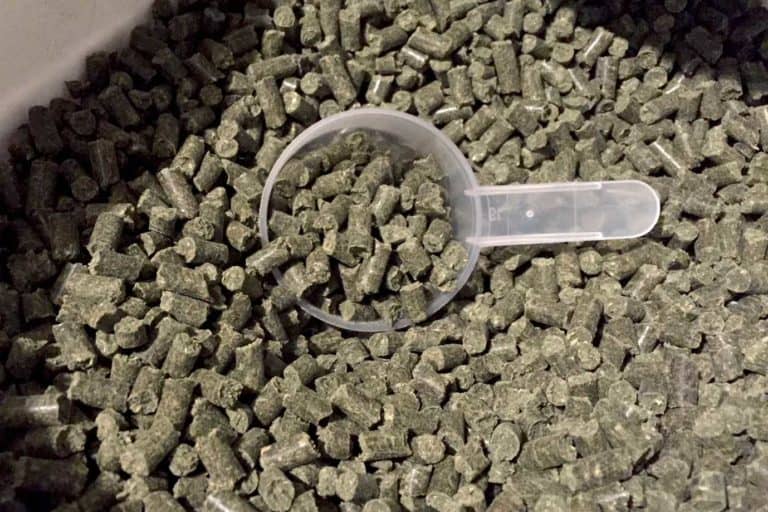Extracorporeal Shock Wave Therapy Applications in Horses
Extracorporeal shock wave therapy is an increasingly popular treatment method for equine injuries. During a presentation at the 2011 Western Veterinary Conference, held Feb. 20-24 in Las Vegas, Nev., Scott McClure, DVM, PhD, Dipl. ACVS, of Iowa

